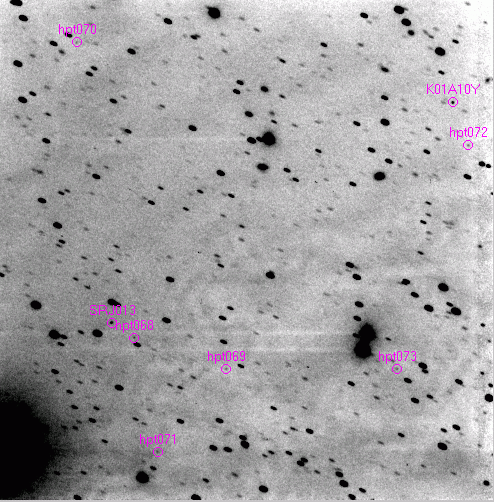
Credit & Copyright: Felix Hormuth, Starkenburg Observatory, Heppenheim, Germany
Currently, there are about 230'000 asteroids with known orbits, the vast majority of which crowd the region between the orbits of Mars and Jupiter, forming the so-called "main belt". In a given region of the sky, all objects populating the main belt show similar motions, as they have compareable distances to the Earth and share the same viewing geometry. Early last century, the German astronomer Max Wolf, director of the observatory on top of the the Königstuhl near Heidelberg, developed an observing strategy, where his astrograph tracked the calculated motion of a hypothetical main belt asteroid in the region of the sky he was observing. Wolf applied that technique, which enabled him to detect fainter asteroids than when he would track the stars, with great success: He discovered (or co-discovered) a total of about 250 minor planets between 1891 and 1932, and he still ranks on notch 33 on the all-time top-list of minor planet discoverers.

When Felix Hormuth took the image seen here, he stacked 20 individual exposures of 60 seconds, taken with the Apogee AP-7 CCD camera on the 0.45m f/4.4 Newtonian reflector of the Starkenburg Observatory near Heppenheim, Germany. Following the footsteps of Wolf, he applied typical main-belter motion when he stacked the images using Astrometrica, in order to confirm an asteroid that was discovered by his fellow observer Reiner Stoss the night before, using the remotely controlled 0.3m Schmidt-Cassegrain at the Observatorio Astronomico de Mallorca (OAM). It was no small surprise for Hormuth when he found no less than eight main-belt asteroid on the image: As expected, he was able to confirm the asteroid with the temporary designation SRJ013, which has later been identified as 2003 RN14. Then, there was 2001 AY10, marked on the image with the packed designation K01A10Y. In addition to that, there were six "new" asteroids on the image, to which he assigned the temporary designations hpt068 to hpt073. Three of these have leter been identified with known asteroids (hpt68 = 2003 SU4, hpt069 = 2003 ST4 and hpt071 = 2003 SS4), while the remaining three (hpt070 = 2003 SO15, hpt072 = 2003 SM15 and htp073 = 2003 SN15 ) are now credited to the Starkenburg observatory.